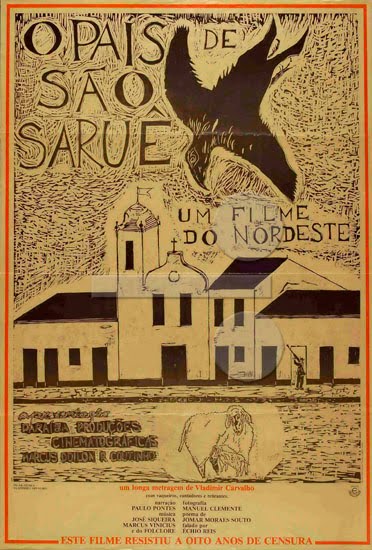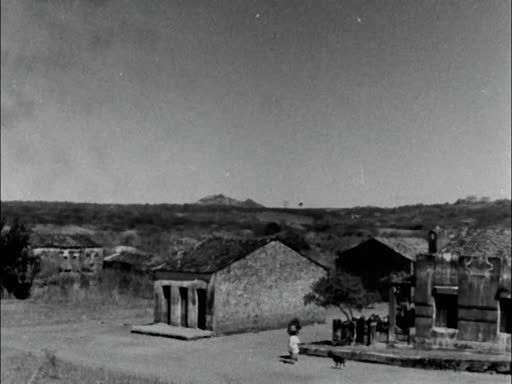 I guess it’s time that I face the fact that I don’t enjoy Hollywood or pseudo-Hollywood movies as I used to ten or more years ago. It isn’t that they were particularly different back then, whatever nostalgia-freaks and eternal children might tell you (though, gotta admit, nineties spawned some quality shit), it’s that ten or more years have passed and I’m a changed man. I no longer look for entertainment in the cinema (if I ever did, though I must have at some point), and if I take that part from the equation there’s really not much of anything left. Occasional glimpses of intelligence or tidbits of some interesting idea are far too rare to warrant the suffering of looking at bothersome and fairly irritating contemporary mainstream or hipster-mainstream cinema. So I turn my gaze elsewhere in hope of stumbling upon something completely different. Should’ve known better by now.
I guess it’s time that I face the fact that I don’t enjoy Hollywood or pseudo-Hollywood movies as I used to ten or more years ago. It isn’t that they were particularly different back then, whatever nostalgia-freaks and eternal children might tell you (though, gotta admit, nineties spawned some quality shit), it’s that ten or more years have passed and I’m a changed man. I no longer look for entertainment in the cinema (if I ever did, though I must have at some point), and if I take that part from the equation there’s really not much of anything left. Occasional glimpses of intelligence or tidbits of some interesting idea are far too rare to warrant the suffering of looking at bothersome and fairly irritating contemporary mainstream or hipster-mainstream cinema. So I turn my gaze elsewhere in hope of stumbling upon something completely different. Should’ve known better by now.
Rule of the averages applies almost anywhere and once again I’m “forced” to sit through overly ideological (usually leftist) cinema which is, when you get down to it, not that different from Hollywoodites. That creators of these movies (together with their brand/PR representatives who, admittedly, are just doing their job(s)) think differently is nothing but a proof of how delusions rage all over the (artistic) community. If you look though, you can still find one redeeming quality to these movies (for some reason I find it more fulfilling as days go by). If you can draw a sign of equation between Hollywoodian and non-Hollywoodian ideologicalities, you can’t draw same sign between narrative modes that are used to showcase aforementioned ideologies. While Hollywoodian narrative structure (together with themes, motifs and discursive logic) is more or less repetitive style-variation, non-Hollywoodian ideo-factories operate on a completely different level.
 Let’s put this in layman’s terms. When you watch something like The 100 (it’s a TV-show but everything that has been said applies on it as well; sign-construction knows no boundaries), you know that you’ve seen it before. You might not know the exact moment of a plot twist, or the exact nature of some big secret or the other etc. but what you do know is the farthest possible level that show/movie can attain. You are aware of the limits of representation in contemporary (or omnitemporary) mainstream cinema. On the other hand, when you watch something like Carvallho’s O País de São Saruê you’re introduced to a complete unknown.
Let’s put this in layman’s terms. When you watch something like The 100 (it’s a TV-show but everything that has been said applies on it as well; sign-construction knows no boundaries), you know that you’ve seen it before. You might not know the exact moment of a plot twist, or the exact nature of some big secret or the other etc. but what you do know is the farthest possible level that show/movie can attain. You are aware of the limits of representation in contemporary (or omnitemporary) mainstream cinema. On the other hand, when you watch something like Carvallho’s O País de São Saruê you’re introduced to a complete unknown.
This is a Brazilian documentary from the 70s which has been banned from public eye for close to a decade because it undermined the great national narrative of Brazilian ruling caste of the time (military). This has been a recurring pattern in art history for so long that you have to wonder how many of those banned artifacts actually had any sort of subversive potential. That’s the thought for another time though. Anyhow, Carvallho’s movie is openly political, openly engaged ad openly “liberal” with the concept of documentary. This would have bothered me immensely if it weren’t for the fact that Carvallho is using this real-life footage (though some of it is obviously staged) to construct something like a multimedia experience, a synesthetic representation of invisible Brazil which isn’t pure (in a sense that it’s contaminated by the author’s puppet mastering) but is nevertheless powerful as hell.
 The possibilities of (mis)interpretation, possibilities of experiencing the unexpected, are much more prominent in Carvallho’s movie that in most of the mainstream-products made in the last four decades. If there are limits to Carvallho’s representation of reality, they are hidden far in the realm of abstract deities where few of us dwell. It has become increasingly difficult to find movies like these despite this almost free database called internet that we have. Thankfully, that just means that happiness is increasingly more powerful as well. Anyhow, if someone needed a wake-up call after neo-liberal orgies of World Cup 2014, moving pictures of Vladimir Carvallho should do nicely. They predate the problem but that doesn’t mean they don’t have anything to say about it.
The possibilities of (mis)interpretation, possibilities of experiencing the unexpected, are much more prominent in Carvallho’s movie that in most of the mainstream-products made in the last four decades. If there are limits to Carvallho’s representation of reality, they are hidden far in the realm of abstract deities where few of us dwell. It has become increasingly difficult to find movies like these despite this almost free database called internet that we have. Thankfully, that just means that happiness is increasingly more powerful as well. Anyhow, if someone needed a wake-up call after neo-liberal orgies of World Cup 2014, moving pictures of Vladimir Carvallho should do nicely. They predate the problem but that doesn’t mean they don’t have anything to say about it.
Direction and Script: Vladimir Carvallho